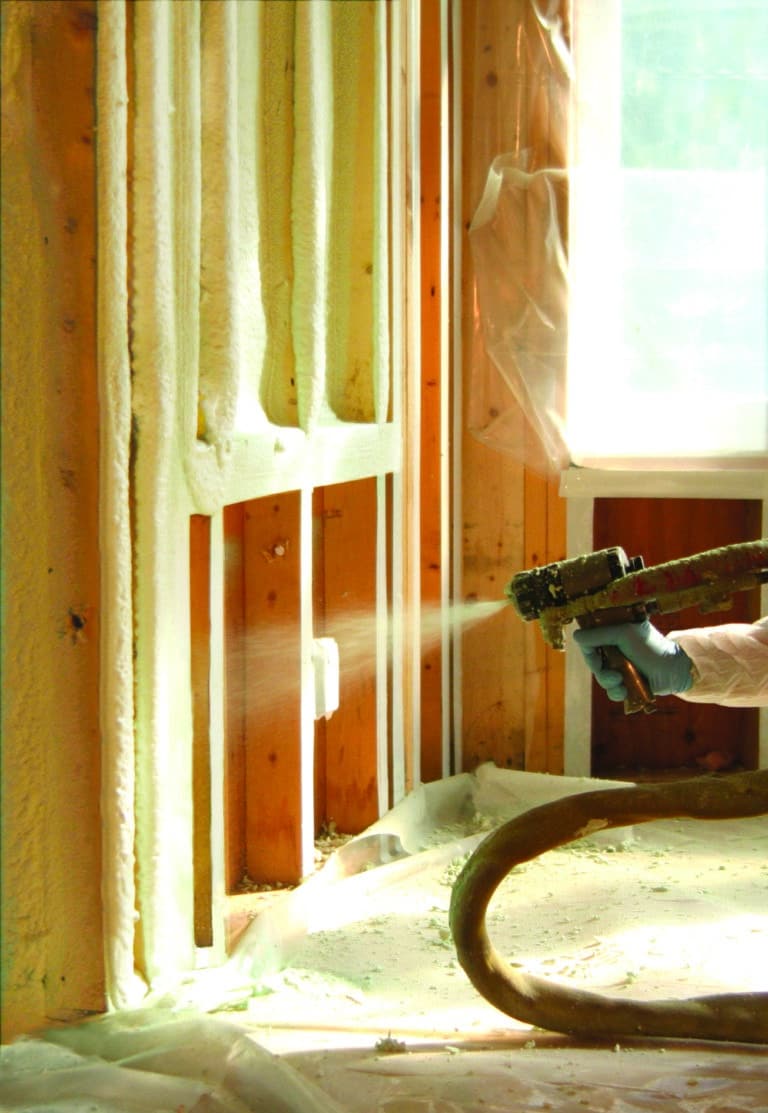Spray foam insulation can be installed nearly everywhere, like between the framed studs of walls, floors, and ceilings. Its ability to expand means it’s especially appreciated for its overall coverage.

Benefits of Choosing Spray Foam Insulation
Ensuring your home is insulated correctly is one of the most effective ways to enhance its efficiency and value. Is spray foam insulation worth it? Adequately installed spray foam insulation significantly reduces your energy bills and:
- Facilitates better indoor air quality: Spray foam insulation reduces the number of air pollutants and allergens in your home.
- Provides a quieter indoor environment: As a result of spray foam insulation, outside noises are greatly reduced, providing a peaceful environment for your home. While your home is not completely soundproof, it reduces noise significantly.
- Increases comfort level: Spray foam insulation helps make your home more comfortable by eliminating drafts and condensation.
- Helps with air sealing: Since it can fill irregular and hard-to-reach spaces, spray foam insulation is effective at sealing cracks and voids in any area. This ability allows spray foam insulation to be easily installed between floor joists and around wiring, piping, and ductwork.
Spray foam insulation also:
- Adds structural strength to your home and adheres well to any surface it’s sprayed on.
- Helps boost your home’s resale value.
- Helps inhibit mold growth because it does not absorb water.
- Does not easily settle or shrink in size after it’s installed.
Our team uses spray foam for various projects, from wall insulation to attic insulation and more.
Spray Foam Insulation vs. Other Insulation Types
There are many benefits of choosing spray foam insulation for your home’s insulation project:
- Spray foam insulation: Spray foam insulation works well for both new construction and re-insulation projects. This type of insulation provides a great air barrier, reduces air leakage, and can fill all kinds of spaces in your home, effectively saving you money.
- Fiberglass insulation: Fiberglass insulation is ideal for home remodeling and renovation projects. It consists of extremely fine glass fibers and is one of the most commonly used insulation materials.
- Cellulose insulation: Your home’s walls, ceilings, and floors are filled with odd-shaped cavities and obstacles created by plumbing, air ducts, and wiring. That’s where cellulose insulation works best. Cellulose insulation is sprayed or blown into your home’s walls, providing a seamless insulation system.
- Radiant barrier insulation: Radiant barrier insulation can make your home more energy-efficient and comfortable. Radiant barriers, typically installed in the attic, are superior at reducing heat that gets absorbed in areas where sunlight primarily hits, such as an attic.
- Rigid foam insulation: Rigid foam insulation is mainly used for new construction projects and is a great solution for insulating homes and buildings and maximizing energy efficiency.
Frequently Asked Questions about Spray Foam Insulation
Can Spray Foam be Installed in Existing Walls?
Yes, it is possible for spray foam to be installed in existing walls; however, drywall needs to be removed before you can install the foam.
Can I Install Spray Foam Insulation by Myself?
While it may be possible to install spray foam insulation yourself, our insulation experts do not consider it to be a DIY project. The process requires practice, knowledge, and the proper tools, so it is best to trust the professionals.
Is Spray Foam Insulation Worth the Cost?
The initial cost of spray foam insulation is well worth the investment when factoring in the overall savings that come in the long term.
You May Also Be Interested In
What is Insulation & How Does It Work?